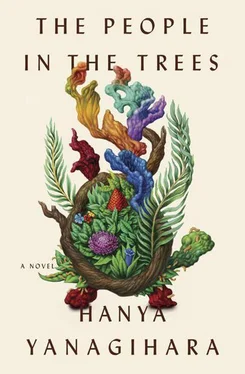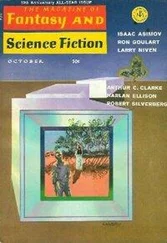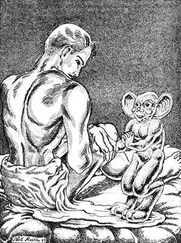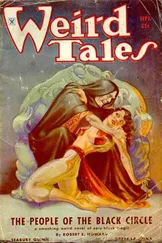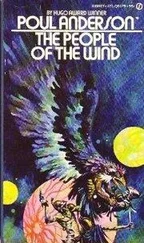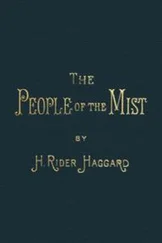Unfortunately, Duff’s book fell out of print in 1980, just three years after its publication.
43In a letter I wrote to Norton after receiving this chapter, I asked if he had ever submitted a paper to any anthropological journals describing the a’ina’ina. He replied that he had in fact done so several times, but that the revelation of the a’ina’ina seemed to contradict the idea of an idyllic and peaceful society that had been proposed by the post-Tallent generation of U’ivuan scholars and therefore the report was never accepted. One can only hope that this second, newer batch of U’ivuists are able to take a less romantic and more clear-eyed view of the island and revisit their long-held opinions about the culture, especially as regards children and sexuality.
44Unlike on U’ivu, the position of village chief on Ivu’ivu was earned, not inherited. Typically, it was awarded to the first male to kill a wild hog before receiving his ma’alamakina. After receiving the honor, the boy would usually not actually assume his responsibilities until the current chief either died or abdicated in his favor.
45Norton does not say so explicitly, but aside from the tattoo, another indication that a villager had undergone the vaka’ina ceremony was his or her sudden ornamentation. Anyone who had reached sixty o’anas thereafter wore some sort of embellishment, whether a necklace or a cape or a length of fabric (of course, these were often lost or abandoned later, when their circumstances changed). This sartorial addition is not thought to hold any special symbolism or significance; rather, it simply seemed to be an easy way for the honored person to remind the rest of the village about his or her new status and remarkable achievement.
46Norton later told me that one of his greatest regrets from this period was not also taking Ivaiva and Va’ana with him, and indeed, I had always wondered why he hadn’t — they were twins, after all, and would have made for a particularly interesting study. But Norton said that at the time he thought he would be able to successfully corral and control only four subjects, and he decided that it was more valuable to chart the differences between two blood relations of different generations, which meant that the twins by necessity had to be left behind.
47The Ivu’ivuans’ method of disposing of and remembering the dead is notable mostly for its brisk efficiency, especially given the enthusiasm and glee with which they commemorate the more mundane passages of life. The dead spend a day on display in the center of the village, lawa’a frills covering their eyes. That night, after dinner has been cooked, they are placed on top of the fire and left to burn overnight. (In his book, Tallent, who witnessed one of these outdoor cremations, gives a wonderfully vivid rendering of the little firecracker bursts that are audible throughout the night as various body parts explode and their contents simmer in the flames.) The next morning the fire is extinguished, the remains are collected, and a relative of the deceased is dispatched to bury them under one of the trees lining the village’s rim (each family has a certain number of trees allocated to them for these occasions). Tallent notes that the days surrounding the death are marked not by keening or weeping but instead by a “dignified, almost majestical, sense of quiet and contemplation. The deceased’s immediate family continues to go about their daily rituals, but their silence, their lack of chatter in this busy, intimate community, is a ritual in itself, and the other villagers give them peace until the bereaved signal their intention to return to the life of the community. Sometimes this silent mourning takes only days; sometimes it takes months. But it is a remarkable demonstration of being absent in a place so intensely present, of being granted solitude while surrounded by many” (Tallent, The People in the Trees , 178).
I.
What happened next is so well documented that I hardly think it worth much time to tell it yet again. Indeed, a number of books have chronicled the decade following my initial departure from Ivu’ivu much more thoroughly, and in much more exhaustive detail, than I could have done myself, in particular Jeremy Lauerman’s The Immortals: The Discovery That Changed the World , which focuses mostly on the first three years of my return to the States, and Katharine Hetherington’s An Island Good and Small: Norton Perina and the World He Made , which takes as its subject the later years of my research in what would come to be called Selene syndrome, and the denouement of which is an almost Talmudic rendering of my receipt of the Nobel Prize. Finally there is Anna Kidd’s Of Stone and Sun and Everything In Between: A Biography of A. Norton Perina , which, aside from portraying me as something close to godlike, remains my favorite of the trio for its evenhandedness and its author’s superior scientific understanding. I sat for many hours of interviews with all three of these authors, and they have presented me and my work faithfully.
However, certain stories from those years remain largely untold, and I would like to use this opportunity to answer some of the mysteries that persist.
The first concerns the fate of the dreamers. Although I left U’ivu the possessor of perhaps one of the greatest scientific discoveries of the twentieth century, I returned to America a virtual leper. I may have been an explorer with a wonderful, an unimaginable find, but to the academic establishment I was merely a researcher without a lab, and therefore an outcast. Back then, however, I was still too young and guileless to properly appreciate the impossibility of my situation; in fact, I fancied myself something of a ronin, ready to serve anyone who might grant me a home. As it turned out, that place was Stanford, where Tallent — who had, in less than six months, been transformed in anthropological circles from a rebel into a genuine hero — managed to hastily secure me a lab and some money, no doubt funneled improperly from some mysterious slush fund. 48Because my operation was so small, I was made to share techs with a much larger adjoining lab, which of course did not go over well. Mostly, though, my peers didn’t know what to make of me: I was too inexperienced to be running my own outfit and yet too worldly to be under anyone’s command. It was clear that I was protected by someone; I had to hope every day that they wouldn’t discover that it was the Anthropology Department.
It sounds a silly thing to say — after all, I had not been gone so long — but readjusting to America was more challenging than I had anticipated. I was struck by how sparkly and new everything seemed, by the cars gleaming their bright, artificial colors like saliva-slicked sweets, by the sheer volume and inventiveness of clothing everyone seemed to wear: brogues and hats and suspenders and belts and handbags and clinking bracelets and bouncing strands of pearls — a whole language of sartorial excess when only a pouch and a length of fabric would have sufficed. And I marveled too at how stark, how denuded of plant life, the cities were, just one gray block after another, and where there would have been trees there were instead mouse-colored buildings spilling silent people, all in their layers and layers of elaborate and superfluous costumery.
Inside the lab, however, it was always Ivu’ivu. I had tried to make the transition — from island to mainland, from Stone Age to modern age — as seamless as possible for the dreamers, which meant that I’d had to start drugging them more or less from the moment we had arrived on U’ivu, which had been terrifying, overwhelming, to them. (This was back when you could do such things without ethics boards howling at you, when you could ease a transition that otherwise would have killed with its abruptness and severity.) And I had sedated them, of course, on the plane ride to California (all those hours of checking their pulses, their breathing, of shining a tiny penlight — itself a miracle — into their eyes to watch their pupils contract into beady black pinpricks), and during the car ride to the basement bunker beneath the lab where we kept them for several days while we were assembling what would become their permanent residence, and had woken them only when I had safely ensconced them in their new home: a fifteen-by-fifteen-foot room, windowless so they would not be detected by others, with plain walls and a linoleum floor that had been spread with layers of palm leaves and dotted with buckets of bromeliads and potted trees both approximate (a cycad) and not (a ficus) to what they would remember from Ivu’ivu. At one point I tried to introduce a terrarium with a turtle in it, but I came in one morning to find the turtle with its carapace half torn off, its neck limp, and a clot of bloodied feces coating its tail. They were not violent, the dreamers, but they were increasingly agitated and fearful, and their agitation and fear made them sometimes behave in ways that were foreign to them. It was a delicate balance, their sedation: too much and they became logy and staggery, and it was difficult to discern how much of their incomprehension was due to their mental state and how much was artificially induced; too little and they grew anxious, scratching at the walls and wailing at nothing. The goal was to keep them alert enough that they might notice something curious about their surroundings but disoriented enough that they wouldn’t be able to specify what was amiss.
Читать дальше
